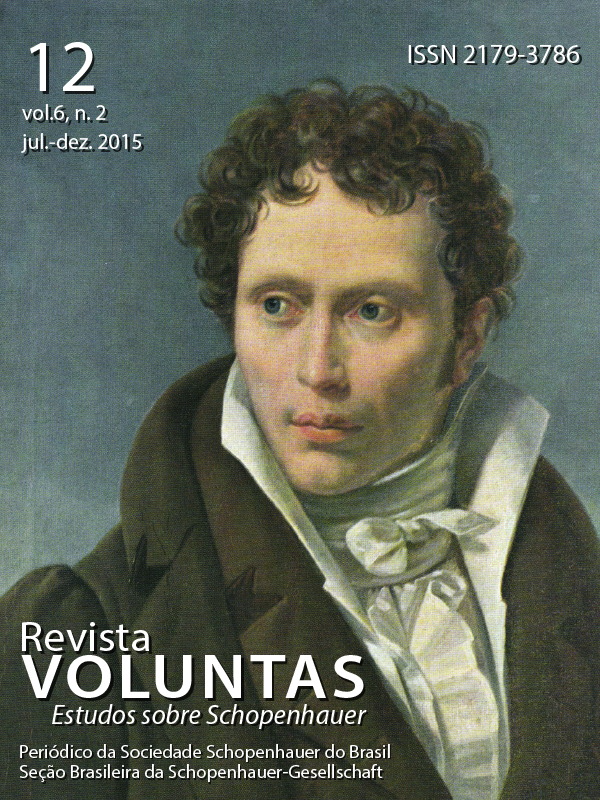About the will with and without knowledge: a preliminary study about the guilt and innocence in the constitution of organic bodies
DOI:
https://doi.org/10.5902/2179378633794Keywords:
Organs of generation, Reproduction, Will, KnowledgeAbstract
The present paper aims at presenting a preliminary study on innocence and guilt in the expression of the character of the organisms.
Downloads
References
BRANDÃO, E. A concepção de matéria na obra de Schopenhauer. São Paulo: Humanitas, 2008.
CACCIOLA, M. L. M. O. A crítica da razão no pensamento de Schopenhauer, 1981. 125p. Dissertação (Mestrado em Filosofia) - Faculdade de Filosofia, Letras e Ciências Humanas, Universidade de São Paulo, São Paulo, 1981.
CACCIOLA, M. L. M. O. Schopenhauer e a questão do dogmatismo. São Paulo: Edusp, 1994.
CACCIOLA, M. L. M. O. A vontade e a pulsão em Schopenhauer. In: As pulsões. São Paulo: Escuta/Educ, 1995.
HUNEMAN, P. Métaphysique et biologie. Paris: Éditions Kimé, 2008.
KANT, I. Crítica da faculdade do juízo. Rio de Janeiro: Forense-Universitária, 2005.
KANT, I. Duas introduções à crítica do juízo. São Paulo: Iluminuras, 1995.
PICHOT, A. Histoire de la notion de vie. Paris: Gallimard, 1993.
SCHOPENHAUER, A. Die Welt als Wille und Vorstellung. In: Sämtliche Werke. Vol. I. Ed. Wolfgang Frhr. von Löhneysen. Frankfurt am Main: Suhrkamp, 1986.
SCHOPENHAUER, A. Die Welt als Wille und Vorstellung. In: Sämtliche Werke. Vol. II. Ed. Wolfgang Frhr. von Löhneysen. Frankfurt am Main: Suhrkamp, 1986.
SCHOPENHAUER, A. O mundo como vontade e como representação. Tomo I. Trad de Jair Barboza. São Paulo: Ed. UNESP, 2005.
SCHOPENHAUER, A. O mundo como vontade e como representação. Tomo II. Trad de Jair Barboza. São Paulo: Ed. UNESP, 2015.
SORIA, A. C. S. Orgânico e inorgânico em “Sobre a vontade na natureza”. Revista Voluntas: Estudos sobre Schopenhauer. Vol. 3, Números 1 e 2, 2012, pp. 195-202.
Downloads
Published
How to Cite
Issue
Section
License
The submission of original manuscripts to this journal implies the transference, by the authors, of the copyrights for printed and digital publication. The copyrights of a published manuscript belong ultimately to the author, and only the copyright for its first publication is reserved to the journal. Authors may only use the same results in other publications explicitly indicating this journal as the medium of the original publication.
Licence
Attribution-NonCommercial-ShareAlike 4.0 International (CC BY-NC-SA 4.0) - This license lets others remix, tweak, and build upon your work non-commercially, as long as they credit you and license their new creations under the identical terms.






